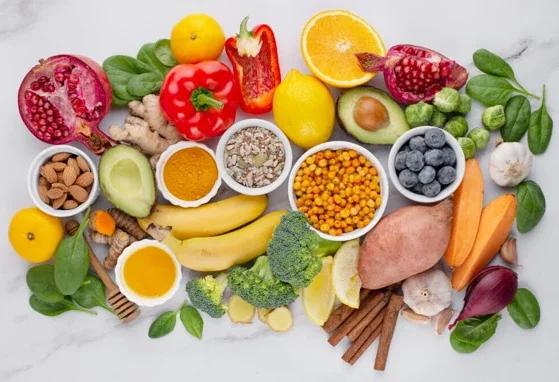The Changing Face of Global Eating Patterns
Nutrition research across the globe is showing that the healthy food revolution is here to stay. As consumers are looking for diets that fit in with their health and wellness lifestyles.
In a paper written by Niamh O’Shaughnessy (MSc.) for the Kerry Health & Nutrition Institute™, she found that food choices and eating habits have changed dramatically over the past fifty years.1 World-wide, rates of obesity, nutrition-related illnesses, and non-communicable diseases (NCD) are on the increase. In addition, the prevalence of allergies affect up to 35% of people. Food allergies are on the increase, particularly in children. Much of this is due to changes in modern-day eating patterns and physical activity.
Lifestyles are becoming more demanding and time pressured, access to calorie-dense fast foods is easier than ever, and the vast majority of people, although busier, are on the whole more sedentary. Busier lifestyles are resulting in mindless eating – eating when you have the time rather than when you are hungry. It can be very tempting to fall into an unhealthy diet of quick sugary snacks and bad carbohydrates. Intake of unrefined, whole grains is waning, and consumption of fruits and vegetables remains insufficient, according to a study at Cornwell University.
In most regions of the world, unhealthy eating habits are outpacing healthy ones. This, coupled with increased sedentary lifestyles, reflect ‘negative nutrition outcomes’ such as increased body fat, cardio-respiratory disease, cancer, diabetes, and obesity. The latest Greendex survey, by the National Geographic Society, measured consumption habits and attitudes in 18 countries. Compared with the 2008 study, consumer habits have improved to some extent in all countries except Brazil. America's ‘junk food culture’ means that US consumers eat the greatest amount of processed and packaged foods and the fewest fruits and vegetables.
According to the World Health Organization (WHO), nutrition is a global issue and the cause of a world health crisis as levels of undernutrition and obesity rise. Dr Francesco Branca, Director of the WHO’s Department of Nutrition for Health and Development says: “Malnutrition is a complex issue, but it is the main cause of death and disease in the world.” Branca says that healthy food tend to be more expensive and less accessible. “Cheap food tends not to be healthy food; we need government policies that make healthy food more available and affordable.”
On the other hand, obesity kills more people than being underweight does. Globally, obesity has nearly tripled since 1975. The WHO and OECD say that over 650 million adults over 18 and 40 million children under the age of 5 were obese in 2018. Almost one in four people in OECD countries is currently obese. The Organization for Economic Cooperation and Development’s (OECD) report makes the urgent economic case to scale up investments in policies to promote healthy lifestyles and tackle this growing global public health problem.
The world over, eating patterns have undergone fundamental changes. There has been an over-all shift from traditional family meal times to more fragmented, anytime eating and eating on the go. Euro Monitor reported that snacking and grazing at convenient times during the day has become more and more the norm. What we have traditionally considered ‘snacks’ now need to serve a nutritional purpose.
Meals used to be social and family occasions, increasingly it is becoming more common for people to eat alone and interact with technological devices rather than the people around them. The report showed, too, that restaurants are catering more to lone diners, and time spent on preparing food at home takes under 30 minutes. The Global Survey Strategic Analysis found significant differences in eating patterns between countries. For example, China, France and Japan still have relatively set meal structures in contrast to Brazil, the UK and the USA, where meal times differ greatly between individuals, are casual, and require less preparation and clean-up time.
On a global level, lunch seems to be the most consistent meal of the day in a number of studies, with almost three quarters of the Global Survey Strategic Analysis respondents eating a meal at 12 or 1pm.
Food, once consumed for survival, is now a social activity. O’Shaughnessy says that the way we eat, the type of food we buy, where we get it and how it is prepared has become a part of our character and defines how well we live. A study by the School of Psychology, University of Birmingham defined social eating norms as perceived standards for what constitutes appropriate consumption, whether that be amounts of foods or specific food choices, for members of a social group.
This leads to another issue: portion size. Social groups often determine consumption norms. Studies have revealed that given multiple flavour choices, people generally consumed more – think of buffets. In addition, amorphous foods like cereals, candyfloss, spaghetti, rice and cheese curls, are consumed in larger portions.
The good news is that there is growing awareness around what constitutes healthy food. This has started to see a shift in eating habits. Many consumers are re-evaluating their diets and are paying more attention to the nutritional components of the food they buy and consume. As consumers become more knowledgeable, there is an increased need for more personalised nutrition.
Amongst even ‘mainstream’ consumers, healthy eating and a wellness lifestyle is now more top of mind than ever before. However, there is a strong need for nutritionists to guide this trend responsibly as many consumers turn to Google for nutrition advice. Many brands are creating ‘better-for-you’ and ‘good-for-you’ products that either reduce or exclude ‘food villains’ like sugar and trans-fat, or add nutrients like calcium, vitamin D, and fibre.
As people try to pro-actively manage their health and shun fads in favour of a more holistic wellness approach, they are looking for exciting, healthy food that is quick, simple, meets social expectations and allows a balance. The trend of responsible food consumption will continue to grow, which should not go unnoticed by food producers. The whole ecosystem of food production is under the watchful eye of a new brand of consumer.
If you liked this post you may also like




